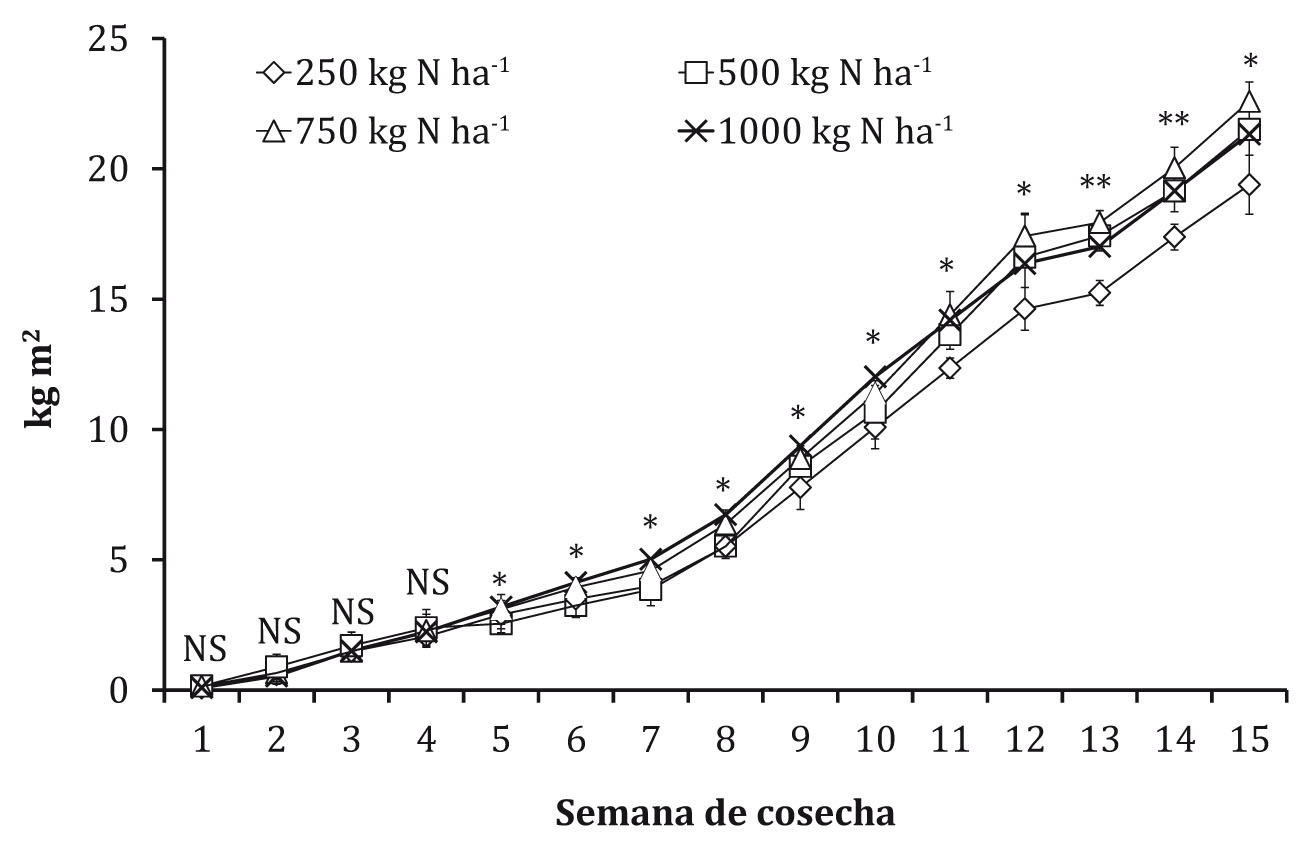Nitrogen fertigation influence on nitrate concentration of nitrates on extract cellular of petiole, yield and quality of greenhouse tomato
Keywords:
nitrogen, extract cellular of petiole, mineral nutrition, yield, greenhouseAbstract
Nitrogen is the macronutrient that most affect the yield and quality of harvested horticultural products. However it is important to know the response of each environment and horticultural crop in order to get a most efficient use of nutrient applied. Tomato crop (Lycopersicon esculentum Mill.) "Beatrice" was cultivated under plastic greenhouse conditions on arid soil of Sonoran desert of Mexico Northwest. Nitrates in extract cellular of petiole, fruit yield (total and marketable) and quality parameters (total soluble solids: TSS, titratable acidity: AT and soluble solids titratable acidity ratio: TSS/AT) were evaluated in relation of four nitrogen fertilization rates (250, 500, 750 and 1000 kg N ha-1). During nine dates, nitrate concentrations in extract cellular of petiole (ECP) were determined and the relationship with marketable yield was considered. Significant differences were found in total and marketable yield (P 0.05). Size fruit resulted not affected by any nitrogen rates. On the other hand, when nitrate concentrations on ECP were related at nitrogen rates applied, a significantly response was found (P < 0.05). Similarly, nitrate in ECP concentrations were associated with marketable yield on eight of nine dates tested (P<0.05). Under this environment soil and climate conditions, greenhouse tomato respond at high nitrogen rates with high yields, with none effect on quality. On the other hand, because nitrate concentrations in ECP were in relation with fruit yield, it could be possible to identify preliminary sufficiency nitrates ranges.
Downloads

Downloads
Published
How to Cite
Issue
Section
License
Aquellos autores/as que tengan publicaciones con esta revista, aceptan las Políticas Editoriales.










.jpg)




